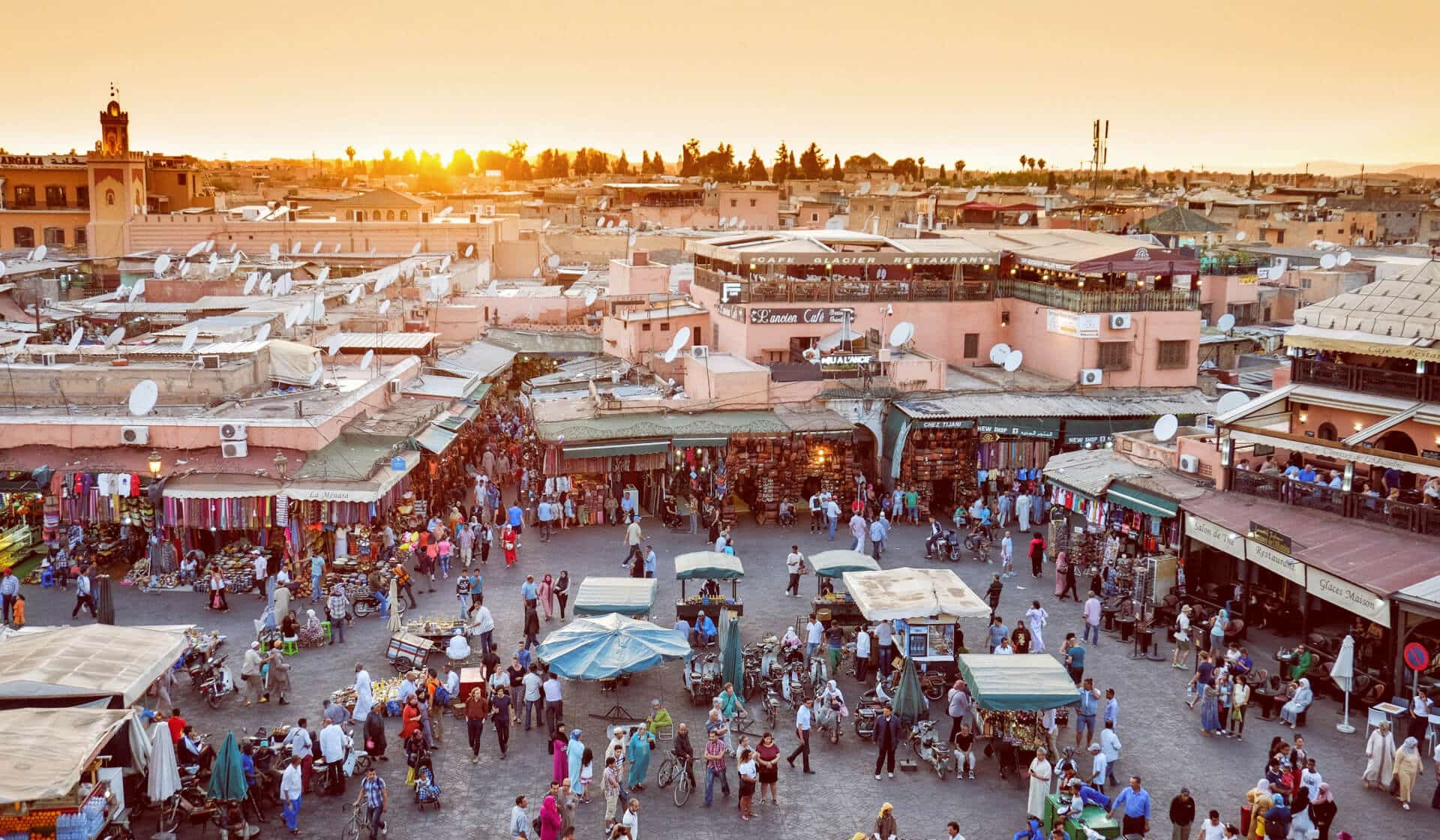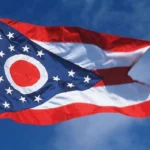
Nestled within the captivating landscape of Morocco, Marrakech stands as a city where history and culture intertwine seamlessly. From its foundation in the 11th century to the bustling metropolis it is today, Marrakech has evolved into a vibrant tapestry of ancient traditions and modern influences. This enchanting city, known as the “Red City” for its distinctive sandstone walls, boasts a rich architectural heritage, bustling markets, and oases of serenity. Join us as we embark on a journey through 25 intriguing historical facts and numerical trivia, uncovering the unique facets that make Marrakech a timeless destination.
What country is Marrakech in?
Marrakech is located in the country of Morocco, situated in North Africa. Morocco is known for its diverse landscapes, ranging from the Sahara Desert to the Atlas Mountains, and Marrakech stands as one of its most iconic and culturally rich cities.
Foundation Year: Marrakech, Morocco, traces its roots back to 1062 when Abu Bakr ibn Umar, a cousin of the Almoravid ruler Yusuf ibn Tashfin, founded the city. The strategic location of Marrakech in the foothills of the Atlas Mountains provided a natural defense, and the city soon became a bustling center for trade and culture. The founding marked the establishment of a city that would play a significant role in North African history, influencing trade routes and serving as a cultural hub.
Why Marrakech is called the Red city?
Marrakech earned the moniker “Red City” because of the distinctive red sandstone walls that envelop the historic medina. Constructed in the 12th century, these walls not only served as a protective barrier but also gave the city its characteristic reddish hue. The walls are a striking feature, particularly during sunset when they bathe in warm tones, creating a mesmerizing ambiance that has become synonymous with Marrakech.
Medina Wall: Marrakech is enclosed by approximately 12 miles (19 kilometers) of red sandstone walls, built in the 12th century. These walls, adorned with numerous gates, not only served as a formidable defense but also symbolized the city’s historical significance. The color of the walls, characteristic of the local architecture, earned Marrakech the nickname “The Red City.” The walls stand as a testament to the skilled craftsmanship of the Almohad dynasty, showcasing intricate geometric patterns and designs.
Jardin Majorelle: The enchanting Jardin Majorelle is a botanical garden designed by the French artist Jacques Majorelle in the 1920s. Later owned by Yves Saint Laurent and Pierre Bergé, the garden is a lush oasis with exotic plants, vibrant blue structures, and reflective pools. The intense blue color, known as “Majorelle Blue,” is a captivating feature throughout the garden. Yves Saint Laurent, a legendary fashion designer, found inspiration in these surroundings, and after his death, his ashes were scattered in the garden as a tribute to its significance in his life.
Koutoubia Mosque Minaret Height: The Koutoubia Mosque, a masterpiece of Almohad architecture, boasts a minaret standing at an impressive height of 77 meters (253 feet). Constructed in the 12th century, this minaret is an iconic symbol of Marrakech and is visible from various parts of the city. The mosque itself is surrounded by beautiful gardens and serves as a focal point for worshipers and visitors alike. The Koutoubia Mosque’s towering minaret is a testament to the engineering and architectural prowess of the Almohad dynasty.
Saadian Tombs Rediscovery: The Saadian Tombs, dating back to the 16th century, were hidden for centuries until their rediscovery in 1917. These tombs are the final resting place for members of the Saadian dynasty, including Sultan Ahmad al-Mansur. The mausoleum features stunning tile work, intricate carvings, and a peaceful courtyard. The rediscovery of the Saadian Tombs was a historical revelation, shedding light on an architectural treasure that had been concealed for generations.
El Badi Palace Construction Time: The grand El Badi Palace, commissioned by Sultan Ahmad al-Mansur, commenced construction in 1578 and took an astonishing 25 years to complete. The palace, once a symbol of opulence and grandeur, boasted exquisite craftsmanship and intricate detailing. However, over time, much of its wealth was plundered, and today, the palace stands as a magnificent ruin, offering a glimpse into the architectural splendor of the Saadian dynasty during the 16th century.
Marrakech Population Growth: Marrakech has experienced significant population growth, evolving from around 500,000 in the 1980s to over 1.7 million people as of 2022. This substantial increase is attributed to factors such as urbanization, economic opportunities, and a thriving tourism industry. The city’s growth has led to a dynamic blend of traditional and modern influences, shaping Marrakech into a cosmopolitan center with a rich cultural tapestry.
Ben Youssef Madrasa Age: The Ben Youssef Madrasa, a renowned Islamic college, traces its origins to the 14th century, making it one of the oldest educational institutions in Marrakech. Initially founded as a theological college, it underwent expansions in the 16th century, transforming into the architectural masterpiece that stands today. The madrasa’s intricate tile work, cedar woodcarvings, and central courtyard reflect the rich history and architectural brilliance of Moroccan craftsmanship.
What is Marrakech best known for?
Marrakech is renowned for its captivating blend of history, culture, and architectural splendor. The city stands as a testament to centuries of North African civilization, with its bustling medinas, ancient palaces, and vibrant souks. Marrakech is a cultural hub, attracting visitors with its traditional Moroccan music, dance, and art. The city is also celebrated for its picturesque gardens, including the iconic Jardin Majorelle, and its proximity to the majestic Atlas Mountains.
Marrakech International Film Festival: The Marrakech International Film Festival, inaugurated in 2001, has emerged as a prestigious event in the global film industry. Set against the backdrop of Marrakech’s enchanting landscapes, the festival attracts renowned filmmakers, actors, and cinephiles from around the world. With its focus on promoting cinematic diversity, the festival has become a platform for showcasing both established and emerging talents, contributing to the city’s reputation as a cultural hotspot.
Marrakech Climate: Marrakech experiences a semi-arid climate, characterized by scorching summers with average high temperatures exceeding 35°C (95°F). The city’s climate is influenced by its proximity to the Sahara Desert, resulting in hot and dry conditions. Winters are mild, providing a more comfortable climate for tourists. The distinctive climate of Marrakech contributes to its unique appeal, attracting visitors who are drawn to its vibrant culture and historic charm regardless of the season.
Bab Agnaou: Constructed in the 12th century, Bab Agnaou is a historical gate that stands as a remarkable testament to Almohad architecture. This intricately adorned gateway, located in the southern part of the Marrakech medina, is renowned for its detailed carvings, including geometric patterns, inscriptions, and ornate decorations. The gate’s historical significance lies in its role as an entrance to the royal kasbah, reflecting the city’s rich heritage and the influence of various dynasties.
Marrakech Biennale: The Marrakech Biennale, inaugurated in 2005, has established itself as a prominent arts and cultural event in Morocco. Held every two years, the biennale showcases a diverse range of contemporary art, literature, and film from both Moroccan and international artists. The event aims to promote cultural dialogue, foster creative expression, and contribute to Marrakech’s reputation as a global center for artistic innovation and collaboration.
Majorelle Blue Color Origin: The captivating Majorelle Blue, a vibrant shade used extensively in Jardin Majorelle, finds its origin in the work of French artist Jacques Majorelle. Inspired by the blue-painted buildings of Berber villages, Majorelle created this distinctive hue, now synonymous with the garden and famously associated with Yves Saint Laurent. Majorelle Blue reflects the artistic fusion of French and Moroccan influences, adding a touch of exoticism to the garden’s enchanting ambiance.
Atlas Mountains Proximity: Marrakech’s proximity to the Atlas Mountains, extending approximately 2,500 kilometers (1,600 miles) across Morocco, Algeria, and Tunisia, enhances the city’s geographical allure. The Atlas Mountains not only contribute to Marrakech’s stunning backdrop but also offer opportunities for outdoor activities such as trekking and exploring Berber villages, providing visitors with a diverse range of experiences within reach of the city.
Marrakech International Airport Passenger Traffic: Serving as a major gateway to Marrakech, Menara Airport handles over 8 million passengers annually (as of 2022). The airport’s modern facilities and strategic location contribute to the city’s accessibility, fostering tourism and economic activities. The increase in passenger traffic over the years underscores Marrakech’s growing popularity as a destination for both leisure and business travelers.
Maison de la Photographie Collection: Established in 2009, the Maison de la Photographie houses an extensive collection of photographs showcasing Morocco’s rich history and culture. Located in a restored 19th-century building, the museum displays images capturing the essence of Moroccan life, traditions, and landscapes, providing visitors with a visual journey through the country’s past and present.
Marrakech Souks Count: Marrakech boasts approximately 18 distinct souks, each offering a unique array of goods and crafts. These bustling markets are a labyrinthine network of narrow alleys, where visitors can immerse themselves in the vibrant atmosphere of Moroccan commerce. From spices and textiles to traditional crafts and jewelry, the souks showcase the city’s rich artisanal heritage and provide an authentic shopping experience.
Marrakech Museum (Dar Menebhi Palace): Housed in the Dar Menebhi Palace, a 19th-century architectural gem, the Marrakech Museum showcases a diverse collection of Moroccan art, coins, and historical artifacts. The museum offers a glimpse into the country’s artistic evolution and historical milestones, providing valuable insights into Morocco’s cultural richness and the significance of Marrakech as a center of artistic expression.
Marrakech Tanneries: Marrakech is renowned for its traditional tanneries, where leather goods are produced using age-old methods. These tanneries, often concentrated in specific quarters of the medina, are a testament to the city’s longstanding craftsmanship. Visitors can witness the meticulous process of tanning and dyeing leather, a practice that has endured for centuries and remains integral to Marrakech’s artisanal identity.
Marrakech Olive Tree Age: The centuries-old olive tree located in the courtyard of the Koutoubia Mosque symbolizes the enduring nature of Marrakech’s history. This ancient tree, with its gnarled branches and resilient presence, serves as a living witness to the city’s evolution over the centuries. Its location in the heart of Marrakech’s historical center makes it a poignant reminder of the city’s cultural heritage and the interconnectedness of nature and human history.
Marrakech International Marathon: The Marrakech International Marathon, inaugurated in 1987, has become a celebrated sporting event, attracting runners from around the world. The marathon showcases the city’s iconic landmarks, offering participants a unique route that winds through the historic medina, alongside the city walls, and into the modern districts. With its scenic course and a mix of challenging terrains, the marathon not only promotes fitness but also provides a cultural and immersive experience for athletes and spectators alike.
Marrakech Royal Tennis Club: Established in 1928, the Marrakech Royal Tennis Club stands as one of the oldest tennis clubs in Morocco. The club has played a significant role in promoting tennis in the region and has hosted various local and international tournaments. The historic setting, coupled with its commitment to fostering the sport, makes the Royal Tennis Club a noteworthy institution in Marrakech’s sporting landscape.
Marrakech Palmeraie Oasis: The Palmeraie, a vast palm grove situated on the northern edge of Marrakech, is home to over 100,000 palm trees. This oasis, with its lush greenery and traditional mud-brick residences, offers a stark contrast to the bustling city center. The Palmeraie not only contributes to Marrakech’s unique landscape but also serves as a recreational area, featuring luxury resorts, golf courses, and camel rides for visitors seeking a tranquil escape.
Is Marrakesh in Europe?
No, Marrakech (also spelled Marrakesh) is not in Europe. It is firmly situated in North Africa, making it a part of the African continent. The city’s cultural influences, architectural style, and geographical location align with the rich history and traditions of the African continent.
Marrakech Express: The Marrakech Express is a renowned train service that connects Marrakech to Casablanca, offering a scenic and comfortable journey. The train, known for its punctuality and modern amenities, has become a popular mode of transportation for both locals and tourists. The Marrakech Express not only facilitates travel between major cities but also provides passengers with breathtaking views of the Moroccan countryside during the approximately 3-hour journey.
Marrakech International Airport Passenger Traffic: Marrakech Menara Airport, serving as a vital air hub, handles over 8 million passengers annually (as of 2022). This significant passenger traffic reflects the city’s status as a major tourist destination and business hub. The airport’s expansion and modernization efforts over the years have played a crucial role in accommodating the growing number of visitors, contributing to Marrakech’s position as a key player in the global travel industry.









